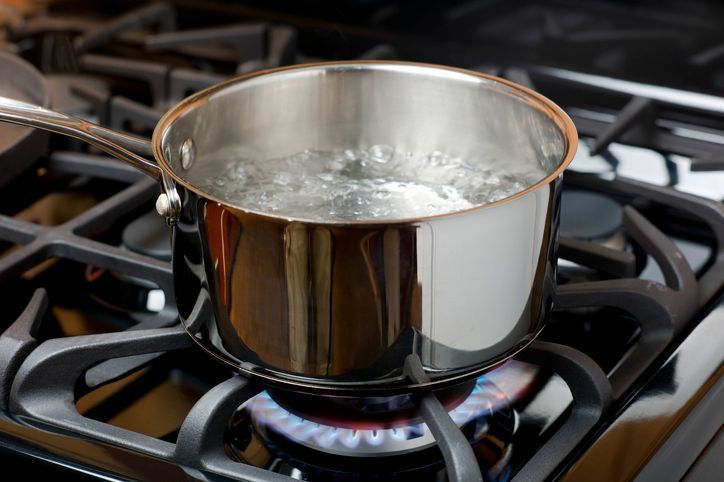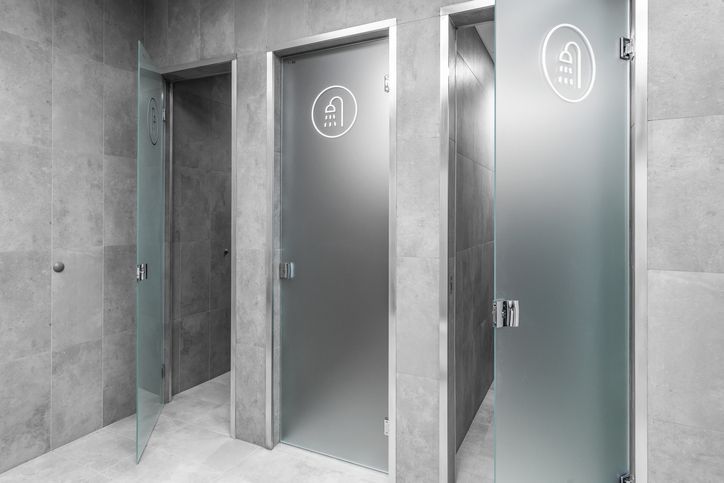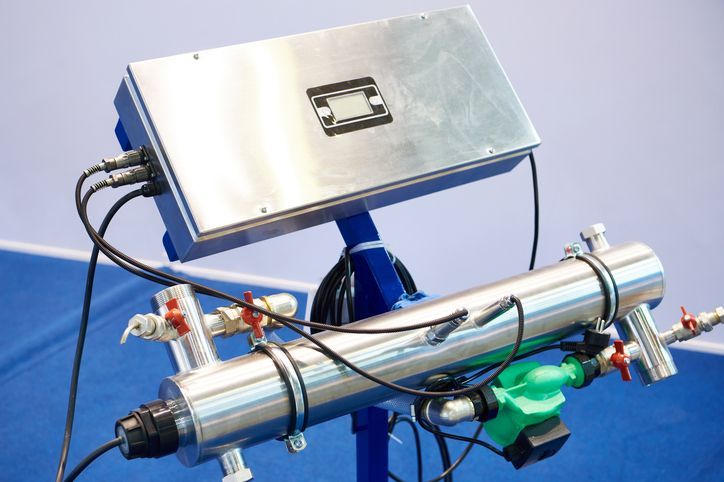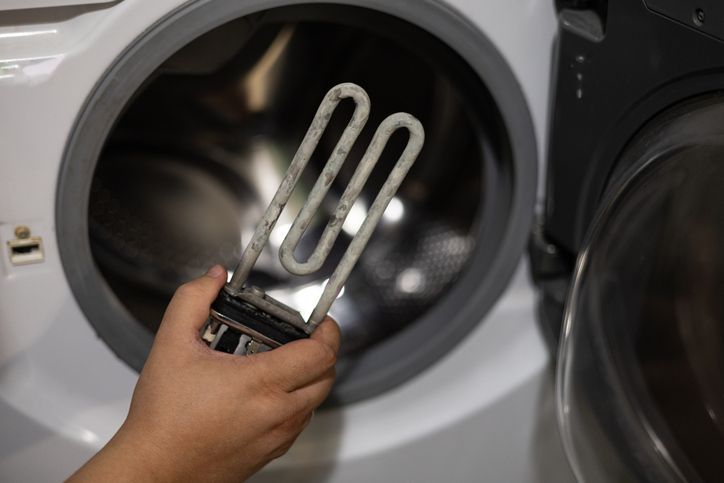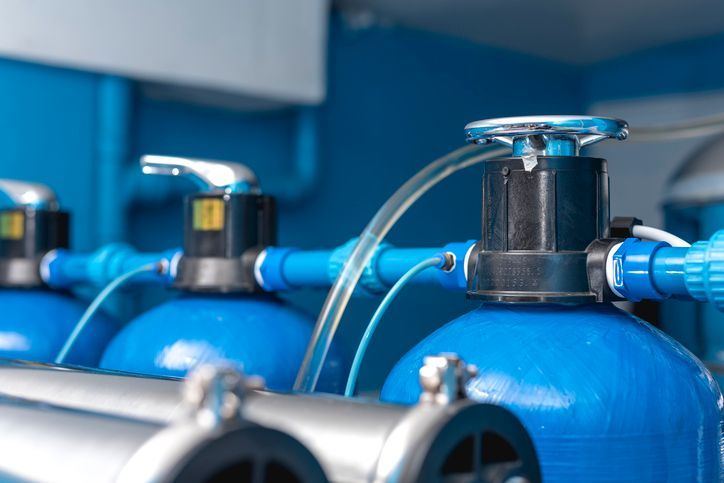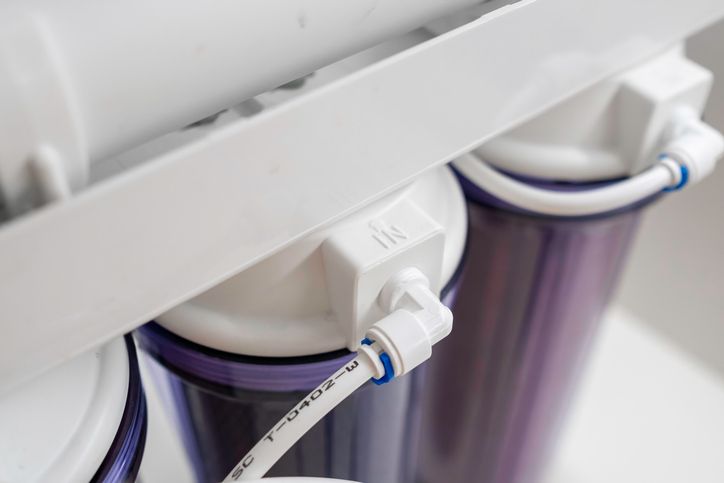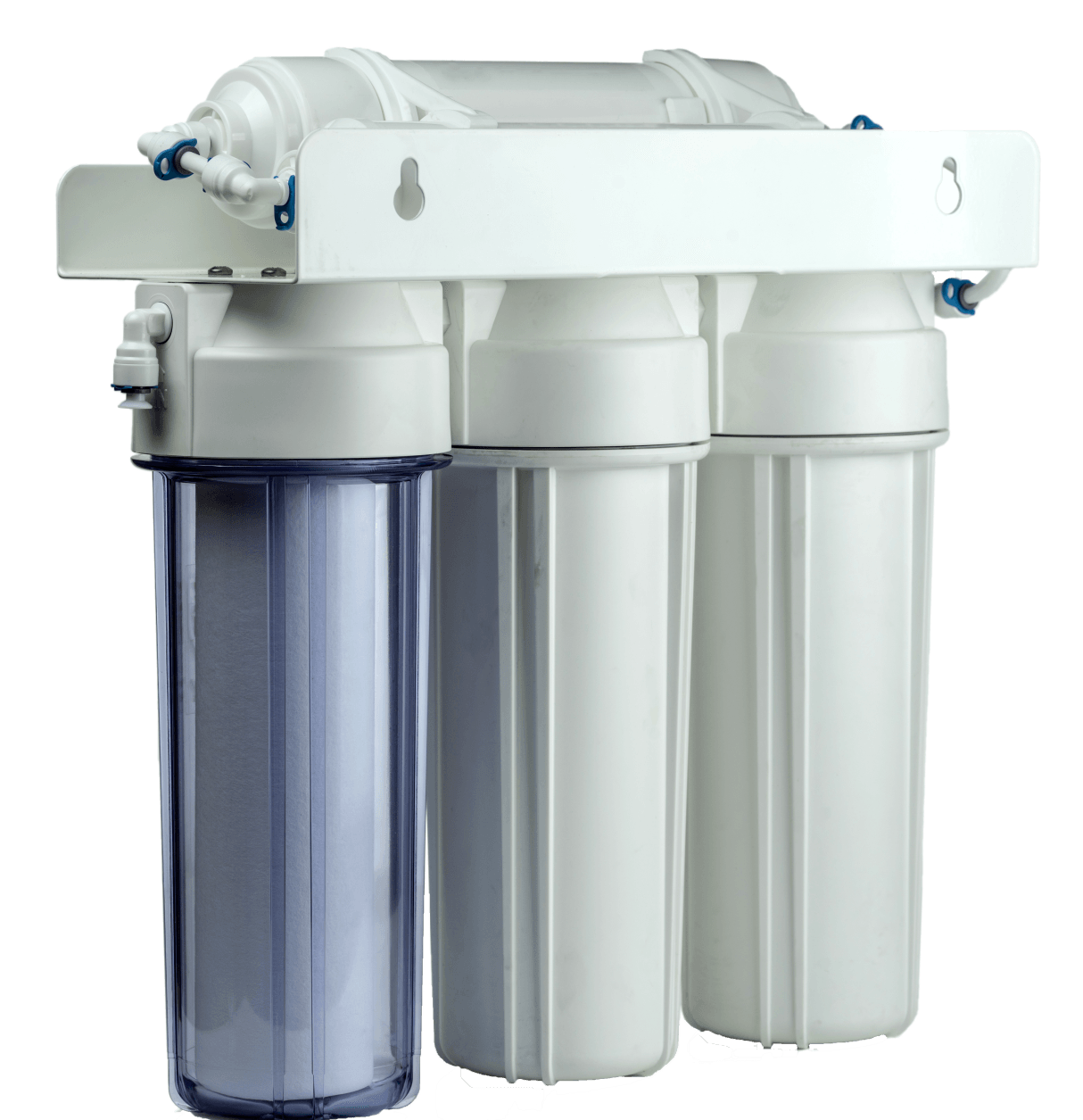How Seasonal Changes Affect Municipal Water Quality—and What Homeowners Can Do About It
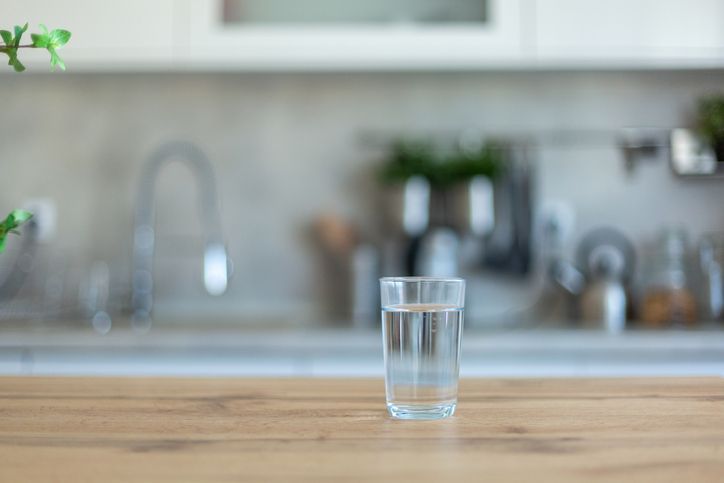
Most homeowners assume that the quality of their tap water stays the same throughout the year, but in reality, seasonal changes and water quality go hand in hand. Municipal water is influenced by a variety of seasonal factors that can affect its safety, taste, and overall quality. From spring runoff and heavy rains to summer algae growth, fall leaf decay, and winter chemical treatments, each season introduces its own set of challenges to the water entering our homes.
Municipal treatment plants are designed to provide safe drinking water, and they generally do a good job. However, their systems are not perfect. Contaminants linked to seasonal changes, such as fertilizers, pesticides, algae, organic debris, and road salt, can either slip through the treatment process or create new chemical byproducts that remain in the finished water.
For homeowners, awareness is the first step toward safer water. The next step is taking action. Aqua Solutions offers a comprehensive range of whole-home water filtration systems that we can customize to meet the shifting demands of each season.
With customizable systems and a strong focus on environmentally friendly water treatment, Aqua Solutions gives families in Pittsburgh and surrounding areas the tools they need to take control of their water quality every day of the year.
Understanding Municipal Water Quality
Municipal water systems are designed to deliver safe and reliable water to homes and businesses. Understanding how these systems work and their limitations can help you make informed decisions about additional water protection measures for your home.
Municipal Water Sourcing and Treatment
Public water systems typically draw from a combination of surface water sources, such as lakes, rivers, and reservoirs, as well as groundwater sources, including wells and aquifers. Once collected, the water undergoes several key treatment steps to remove contaminants and ensure safety:
- Coagulation and Flocculation: In this step, chemicals are added to the water to help bind small particles into larger clumps known as floc.
- Sedimentation: These clumps settle to the bottom of the treatment tanks and are removed from the water.
- Filtration: The remaining water passes through layers of sand, gravel, and activated charcoal, which capture smaller particles and impurities.
- Disinfection: Chlorine or chloramine is added to eliminate bacteria, viruses, and other microorganisms before the water is distributed to the public.
System Limitations
Although municipal treatment is effective at addressing many contaminants, several limitations still exist:
- Residual Chlorine and Disinfection Byproducts (DBPs): While necessary for disinfection, these chemicals can remain in treated water. They may cause unpleasant tastes and odors and have been linked to potential health risks.
- Aging Infrastructure: Older cities may rely on outdated pipes and treatment systems. These can introduce metals such as lead into the water or allow contaminants to seep in through cracks or corrosion.
- Runoff Susceptibility: Surface water sources are vulnerable to seasonal pollution, including agricultural runoff, road salt, and industrial byproducts. These can increase contaminant levels before treatment even begins.
Homeowner Vigilance Matters
It is easy to assume that tap water is completely safe once it leaves a treatment facility. However, water can pick up contaminants during its journey through distribution lines, especially if the infrastructure is old or compromised.
Additionally, some substances may not be fully removed during treatment.
To ensure complete protection, homeowners should remain informed and proactive. Installing a point-of-entry filtration system adds an extra layer of defense by addressing what municipal systems might miss. This approach helps provide consistently clean, healthy water for every tap in the home throughout the year.
Spring: Snow Melt and Agricultural Runoff
Spring brings new life to the environment, but it also marks one of the most unpredictable times for water quality. As snow melts and rainfall increases, runoff from farms, lawns, and roads carries contaminants into rivers, lakes, and reservoirs. These changes can overwhelm water treatment systems and affect both municipal and private supplies.
Key Contaminants
- Nitrates and Fertilizers: Agricultural activities intensify in the spring, releasing fertilizers rich in nitrogen and phosphorus. If not properly filtered, these nutrients can leach into surface water and pose health risks.
- E. coli and Bacteria: Animal waste from farms and wildlife is more likely to enter water sources during heavy rains and flooding, increasing the risk of bacterial contamination.
- Sediment: Erosion from thawing ground contributes to silt and debris in water supplies. This can cause cloudy or gritty tap water and place stress on filtration systems.
Health and Aesthetic Impacts
- Elevated nitrate levels are hazardous for infants and pregnant women, potentially interfering with oxygen transport in the blood.
- Bacterial contamination can cause gastrointestinal illnesses and other immediate health concerns.
- Increased turbidity, or cloudiness, affects water taste and odor. It can also reduce the effectiveness of disinfection processes used by municipal systems.
Recommended Filtration Features
To address the specific challenges of spring, consider upgrading or maintaining the following filtration components:
- Sediment Filters: These remove large particles such as sand, silt, and rust, helping to clarify the water and protect downstream systems.
- Activated Carbon Filters: Effective at reducing chlorine, pesticides, herbicides, and unpleasant odors introduced by runoff.
- UV Disinfection Systems: With these systemes, ultraviolet light is used to neutralize bacteria and viruses without chemicals, making them ideal for seasonal microbial surges.
Spring is a time of growth, but also of runoff. Taking a proactive approach to filtration ensures your tap water remains clear, safe, and pleasant as winter transitions into a wetter, more variable season.
Summer: Algae Blooms and Water Scarcity
As temperatures rise, the summer season brings its own set of water quality concerns. Warm weather encourages algae growth, alters chemical reactions in treated water, and can even create supply issues due to increased demand. These challenges can affect both the safety and comfort of your household water.
Algae and Cyanobacteria
Cyanobacteria, also known as blue-green algae, thrive in sunlit bodies of water enriched with nutrients like phosphorus. They can release harmful toxins into lakes and reservoirs.
Algae blooms are most common in stagnant or slow-moving water and can compromise entire municipal water sources. Cyanobacteria toxins are resistant to some conventional treatment methods and may remain in drinking water if not properly filtered.
Chemical Reactions and Byproducts
High temperatures accelerate chlorine reactions during municipal disinfection, which can result in the formation of more disinfection byproducts such as trihalomethanes (THMs).
Taste and odor issues become more pronounced in summer heat, especially in areas with high organic content in the water.
Water Scarcity and Distribution Problems
- Increased water demand for irrigation, cooling, and personal use puts pressure on treatment facilities.
- Evaporation lowers reservoir levels, which concentrates existing contaminants and makes water harder to treat.
- Low water pressure during peak usage hours can lead to uneven delivery and affect water quality at the tap.
Filtration and Comfort Benefits
Whole-home filtration systems provide steady, high-quality water despite municipal supply fluctuations or quality dips.
Toxin-reducing options like activated carbon or reverse osmosis (RO) systems add an extra layer of protection against algae-related toxins and chemical byproducts.
Water softeners help alleviate issues caused by hard or heavily chlorinated water, which often leads to dry skin, brittle hair, and poor soap performance in the summer.
With a consistent, season-ready filtration system, your family can enjoy clean, refreshing water all summer long without the worry of algae toxins, strange tastes, or water pressure problems.
Fall: Leaf Decay and Organic Material in Water
Fall may appear calm when it comes to water quality, but the season introduces specific challenges that can affect both appearance and safety. As leaves fall and vegetation begins to decay, organic matter builds up in local water sources. Without proper filtration, this seasonal shift can compromise the quality of your water at home.
Decomposition and Chemical Byproducts
As organic material, such as leaves and plant debris, breaks down, it releases natural compounds into the water.
- Humic and Fulvic Acids: These substances are byproducts of organic decay and are commonly found in surface water during the fall.
- Chemical Reactions: When these acids interact with chlorine during municipal water treatment, they can form trihalomethanes (THMs).
- Health Considerations: The EPA regulates THMs because long-term exposure may be associated with certain health risks, including cancer.
Odor and Visual Issues
Water affected by decaying plant matter often exhibits changes in taste, smell, and appearance:
- Musty or Earthy Smell: Organic material can give water an unpleasant aroma or flavor that persists even after treatment.
- Discoloration: A yellow or brown tint in your water is usually a result of tannins and other compounds leaching from decomposing leaves.
Increased Bacterial Presence
As vegetation breaks down in stagnant or slow-moving water, it creates ideal conditions for bacterial growth.
Microbial Risks: Elevated levels of bacteria, including coliforms, may emerge during the fall season, especially in untreated well water or reservoirs surrounded by dense foliage.
Recommended Filtration Solutions
To ensure safe, clean water throughout the fall, consider integrating or upgrading filtration components that target organic material and associated byproducts.
Activated Carbon Filters:
These are effective at removing organic compounds and improving water taste and odor. They also help reduce chlorine and some disinfection byproducts.
Biofiltration Systems:
Advanced filtration setups that use natural biological processes to break down organic contaminants before they enter your household plumbing.
A Seasonal Opportunity for Maintenance
Fall is an ideal time to evaluate and maintain your water filtration system before winter sets in. By addressing the organic load introduced by decaying vegetation, you can prevent chemical byproducts and microbial growth while keeping your water clean, clear, and pleasant to use.
Winter: Road Salts, Freezing Pipes & Disinfection Byproducts
Winter weather poses hidden risks to water quality. Although freezing temperatures may seem to slow or prevent contamination, they often introduce a different set of seasonal water challenges.
These issues can impact both municipal water systems and private wells, making filtration just as crucial during the colder months.
Road Salt Runoff
As snow and ice melt, they carry deicing chemicals such as sodium and chloride into nearby rivers, lakes, and reservoirs. This runoff can enter water treatment systems and eventually reach household taps.
Taste and Health Concerns:
Elevated salt levels may alter the taste of drinking water and pose risks for individuals on sodium-restricted diets.
Corrosion Potential:
High levels of chloride can accelerate corrosion in pipes, fixtures, and appliances, especially in older plumbing systems.
Pipe Breaks and Line Contamination
Freezing temperatures can cause residential and municipal water lines to crack or burst, making water systems vulnerable to additional contaminants.
Sediment and Debris:
Ruptured pipes may introduce dirt, rust, or other particulates into the water supply.
Backflow Risks:
Municipal line breaks or pressure drops can allow bacteria or pollutants from surrounding soil or groundwater to enter the system.
Disinfection Changes
Municipalities may adjust their disinfection strategies to maintain water safety during the winter. These changes stabilize treatment effectiveness in colder water, but they may have unintended side effects.
Increased Chloramine Use: Chloramine, a combination of chlorine and ammonia, is often used during colder months because it is more stable than chlorine alone. However, it can be harder to filter and may produce different chemical byproducts.
Byproduct Formation: Disinfection byproducts, such as nitrosamines, can form and persist in treated water. These compounds are not always eliminated by basic filtration and may pose long-term health risks.
Why Filtration Still Matters
Even when water appears clean during winter, it can contain hidden contaminants like chemical residues, sodium, or byproducts of disinfection. Seasonal lulls in outdoor water use do not reduce the need for protection indoors.
Whole-Home Coverage: A whole-home filtration system provides comprehensive treatment, safeguarding every faucet and appliance from winter-specific risks.
Year-Round Peace of Mind: Consistent filtration ensures that seasonal threats do not compromise water safety or your household's health.
Cold weather does not eliminate the risk of water contamination; it simply changes its source. A proactive approach to water filtration ensures continuous protection regardless of the season.
Why Whole-Home Water Filtration is a Year-Round Solution
Water quality doesn't remain constant throughout the year. From spring runoff and summer algae blooms to fall leaf decay and winter road salt, each season introduces new variables into your water supply. A whole-home water filtration system, also called a point-of-entry (POE) system, is designed to meet these challenges head-on.
Filtering all the water entering your home provides comprehensive protection and peace of mind, no matter the season.
The Point-of-Entry Advantage
Unlike point-of-use systems that only treat water at specific taps, whole-home filtration begins where the water enters your home, typically just after the main water line. This centralized approach offers several significant benefits:
- Comprehensive Coverage: Every faucet, showerhead, toilet, and appliance benefits from filtered water. Whether you're cooking, showering, brushing your teeth, or doing laundry, you can trust that the water is clean and safe.
- Protection for Plumbing and Fixtures: Water filled with sediment, chlorine, or other corrosive substances can damage pipes, fixtures, and water-based appliances over time. Whole-home systems help prevent scale buildup, corrosion, and internal wear, preserving your plumbing system.
- Uniform Water Quality: With filtration at the source, you eliminate inconsistencies in water quality between different rooms or floors in the home. This provides a better, more reliable experience across all water-using activities.
Customizing Water Filtration for Pittsburgh Conditions
Aqua Solutions specializes in designing systems that reflect the unique characteristics of Pittsburgh's water, whether your home uses a municipal supply or a private well.
- High Sediment Control: Heavy rains and spring runoff can increase sediment levels in local water sources. Sediment filters in whole-home systems trap grit and particulates before they reach your appliances or your skin.
- Organic Contaminant Removal: The region's wooded and agricultural surroundings can introduce organic material such as decaying leaves, animal waste, and fertilizers into water sources, especially in the fall. Activated carbon and multi-stage filters remove these substances before they reach your taps.
- Seasonal Chemical Shifts: Public water treatment facilities may increase chlorine or chloramine levels at certain times of the year to control microbial growth.
Whole-home filters help manage these chemical changes, improving taste and odor while reducing potential health concerns.
Year-Round Household Benefits
A well-designed whole-home filtration system not only improves water quality but also enhances your home's overall health, comfort, and efficiency:
- Health Protection: By removing chlorine, microbial contaminants, and chemical residues, your family is exposed to fewer irritants. This is especially helpful for older adults, children, and those with sensitive skin or allergies.
- Comfort and Aesthetics: Filtered water eliminates unpleasant tastes, odors, and cloudy tap water. It improves your experience across all uses, from better-tasting beverages to more enjoyable showers.
- Appliance Efficiency and Longevity: Clean water prevents scale buildup in water heaters, dishwashers, washing machines, and humidifiers. This extends their lifespan and improves energy efficiency, helping reduce utility costs over time.
Consistency in a Changing Environment
Although you cannot control the weather or what runs off into your local water source, you can control how that water is treated once it enters your home. Whole-home water filtration provides a consistent, clean, and safe water supply every day of the year, regardless of seasonal shifts.
Choosing the Right System for Your Home
No two households are the same, and selecting the right water filtration system involves more than picking the most advanced option. It requires a thoughtful evaluation of your home's specific water challenges, your family's needs, and even the seasonal and environmental conditions unique to your region.
Whether you're dealing with municipal water, well water, or a combination of sources, customizing your water treatment solution is the key to long-term water quality and peace of mind.
Assessing Your Household's Filtration Needs
Before selecting a system, take stock of the following factors to determine what type of filtration or purification your home actually requires:
Water Test Results: Start by testing your water through a certified laboratory or a reliable home test kit. Look for common contaminants such as lead, nitrates, chlorine, bacteria, arsenic, and volatile organic compounds (VOCs). Knowing what's in your water helps you select a system tailored to address those specific threats.
Usage Patterns: Consider how much water your household uses daily. Larger families, multiple bathrooms, and water-intensive appliances like dishwashers or washing machines increase demand. Homes with high water usage may need a point-of-entry system rather than just a point-of-use filter under the sink.
Environmental Factors: Your home's location plays a significant role in water quality. If your home is near:
- Farms or agricultural land, you may face elevated levels of nitrates, pesticides, and herbicides.
- Highways or industrial zones, you could be exposed to road salt, petroleum byproducts, or heavy metals.
- Forested or rural areas, the water may carry more organic matter, sediment, or microbial contaminants—especially during spring runoff or after heavy rain.
Filtration System Options
Understanding the strengths of different technologies helps you choose a system—or a combination—that meets your unique needs year-round:
Sediment Filters:
These basic but essential filters trap sand, rust, dirt, and other large particles. They're often used as a pre-filter to protect more sensitive components downstream in the system.
Activated Carbon Filters are excellent for improving taste and odor. They reduce chlorine and some pesticides, herbicides, and VOCs. They're ideal for municipal water supplies and work well in combination systems.
Water Softeners: These are critical for homes with hard water. This issue is characterized by high levels of calcium and magnesium. Softeners help to prevent damaging scale buildup in pipes and appliances, improving efficiency and longevity while enhancing soap and detergent performance.
UV Purification:
A chemical-free solution for biological contaminants, UV systems inactivate bacteria, viruses, and protozoa like Giardia and Cryptosporidium. They are handy for well water or homes vulnerable to seasonal microbial spikes due to runoff or flooding.
Reverse Osmosis (RO): This multi-stage process forces water through a semi-permeable membrane, removing a wide range of contaminants including dissolved solids, heavy metals, fluoride, and even some pharmaceuticals. Typically installed at a single tap, RO is best for drinking and cooking water.
Customizing for Seasonal and Long-Term Protection
The ideal system often involves layering several technologies. For example, a household might use a sediment pre-filter, followed by an activated carbon filter and a UV purifier for comprehensive protection. In areas with hard water, a water softener might be installed at the entry point to protect the plumbing, while an RO unit ensures purified drinking water at the kitchen sink.
Keep in mind that water quality isn't static; it changes with the seasons, local construction, agricultural cycles, and infrastructure maintenance. Choosing a flexible system that can adapt, either through modular components or periodic upgrades, ensures your water stays clean and safe no matter the time of year.
Call Aqua Solutions Today for Water Filtration System Installation
Municipal water systems work tirelessly to supply clean drinking water, but seasonal changes add layers of complexity to your water quality that require additional homeowner vigilance. Spring runoff, summer algae, fall leaf decay, and winter road salts each introduce different contaminants that can degrade water quality.
Aqua Solutions provides Pittsburgh homeowners with the tools to stay ahead of these shifts. With whole-home systems customized to seasonal trends and local water conditions, Aqua Solutions helps families enjoy safe, great-tasting water every day of the year.
Protect your family and your water quality all year long by contacting Aqua Solutions today for a free water test or consultation.
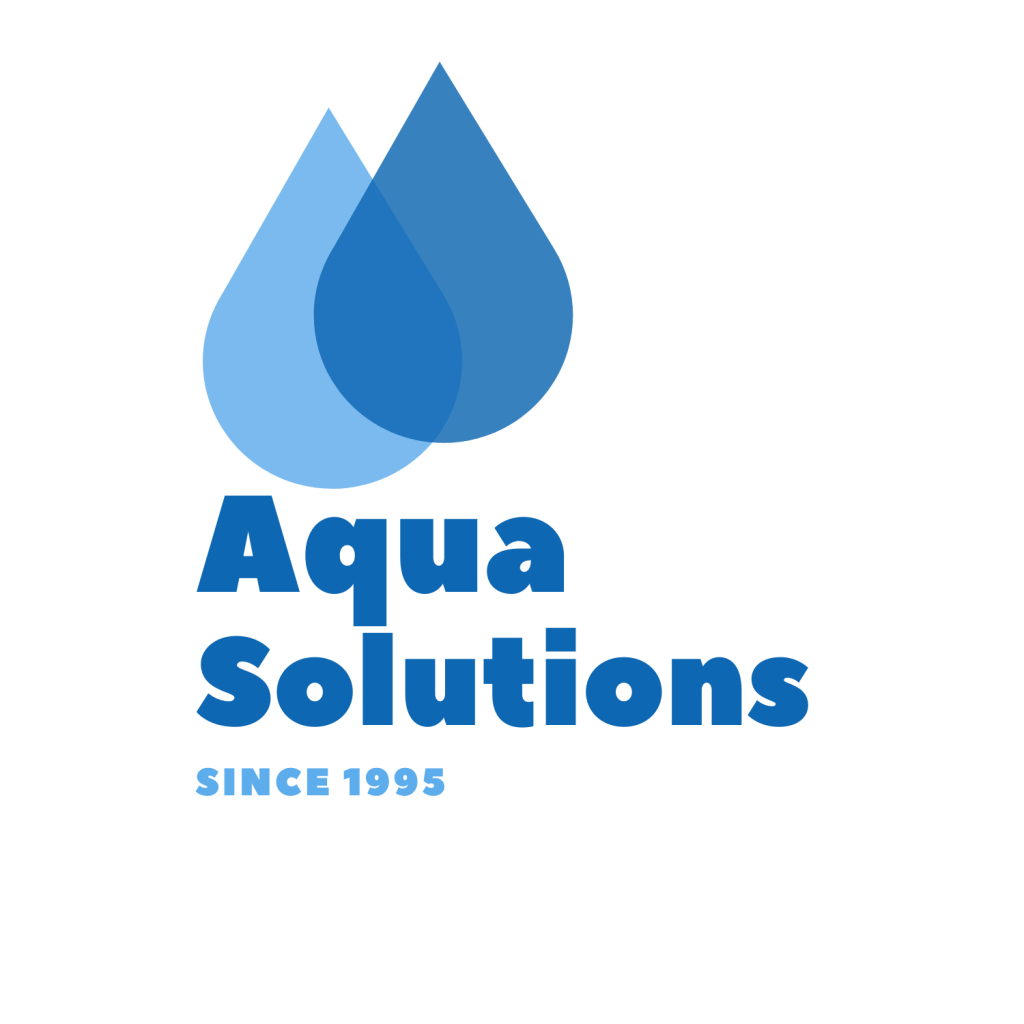
Author:
Gary Monks
Gary Monks has led Aqua Solutions since 1997, earning recognition as a water treatment expert with 25 years of experience. Renowned in Butler, he has won the Best Water Treatment award for three years and actively supports the community, including local sports and radio engagements.
